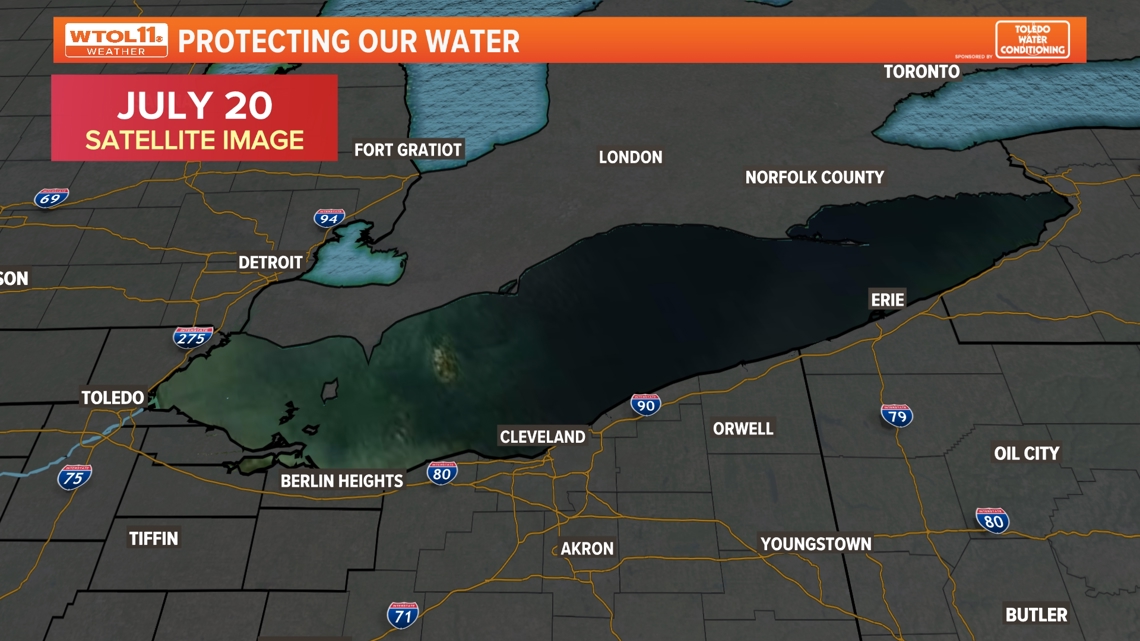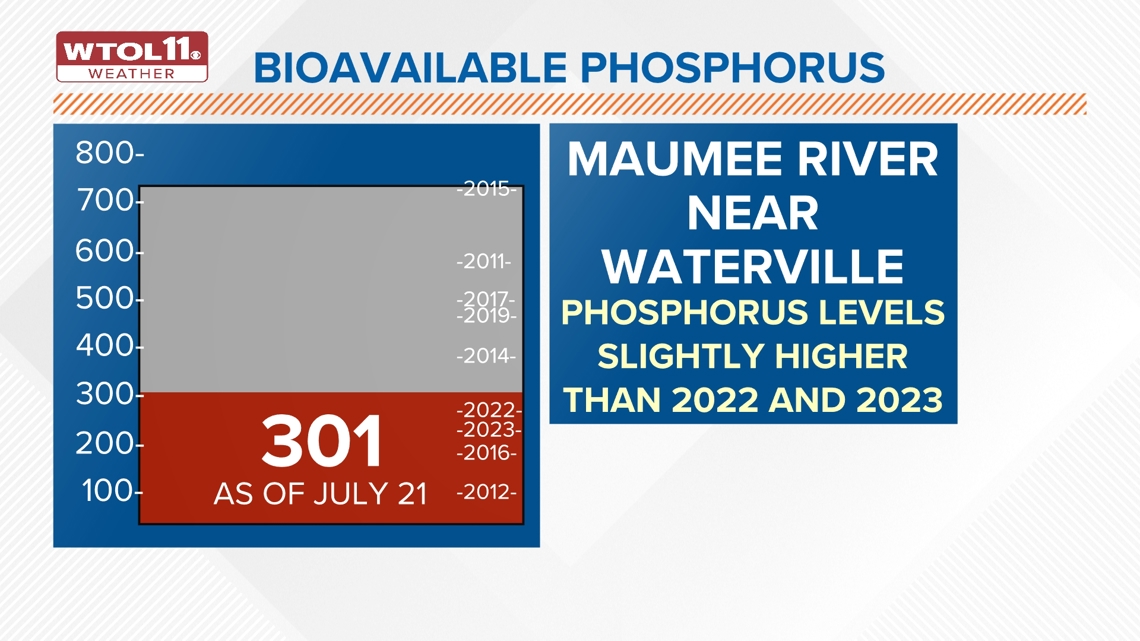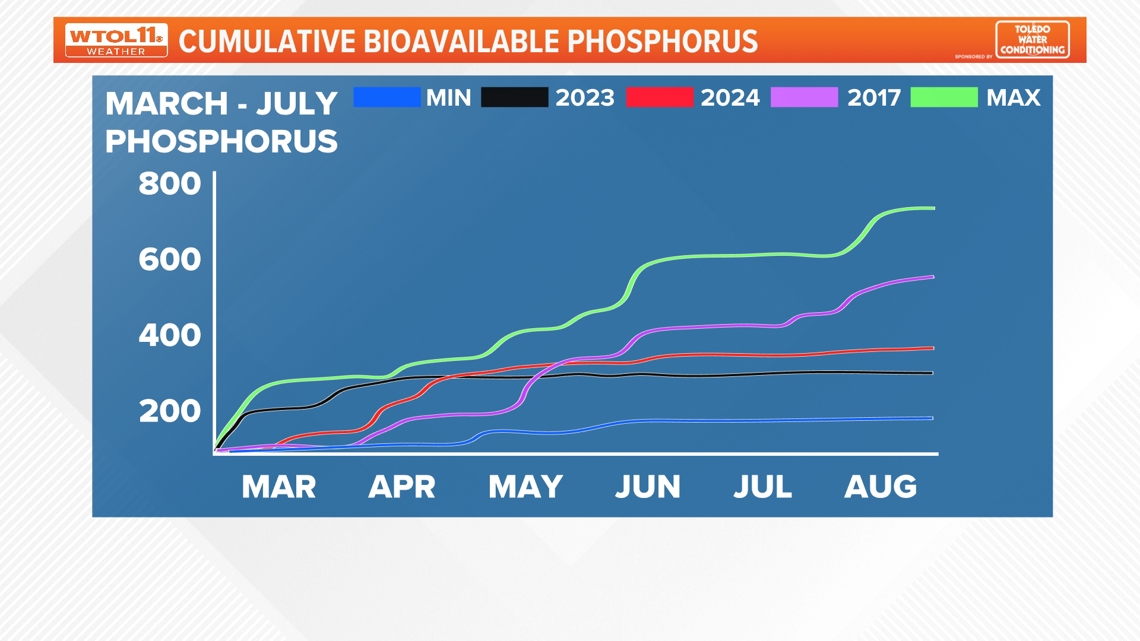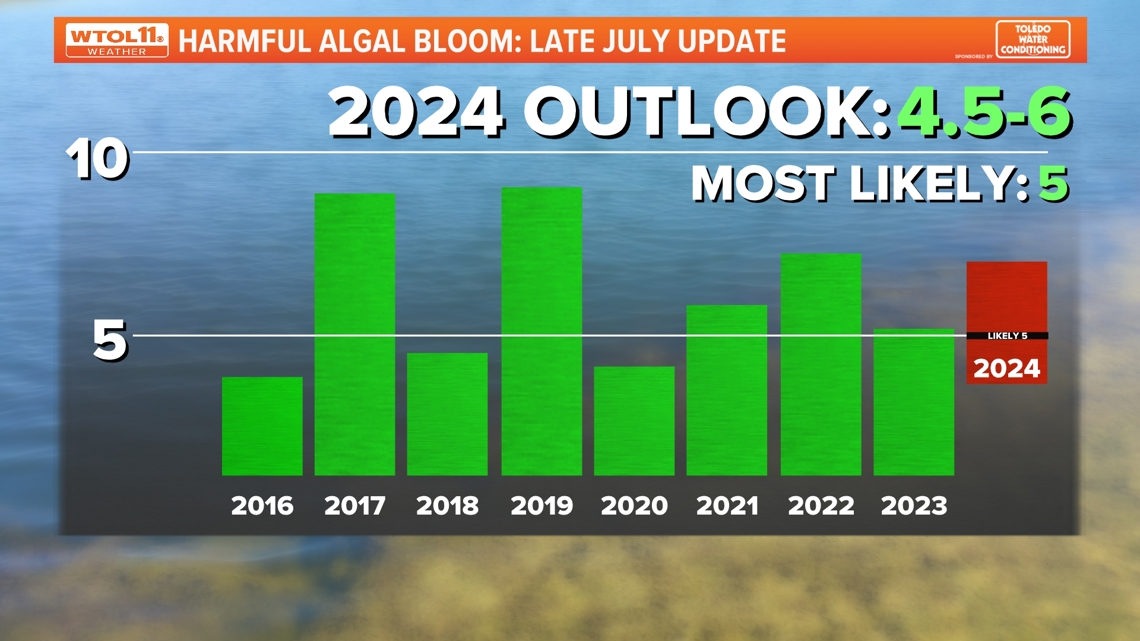TOLEDO, Ohio — A harmful algal bloom started developing on Lake Erie in July as temperatures climbed and phosphorous runoff and nutrient levels increased in the water. Several weeks of algae observations and data have provided a more clear picture of how the rest of the summer bloom will unfold.
The harmful algal bloom typically peaks during August and September, impacting water quality and outdoor recreation in northwest Ohio. A decade after the Toledo water crisis, you may be wondering how algae will impact our water this year. Meteorologist John Burchfield breaks down the latest on this summer's algal bloom as of late July.
In late July, algae was reported in the western basin of Lake Erie, and a green tint was visible on satellite imagery from outer space. Moderate algae levels were reported from the Maumee Bay north to Pointe Mouillee State Game Area in Michigan and south to Magee Marsh. This image shows a photograph of Lake Erie taken from outer space by the Copernicus Sentinel-3a satellite.


The green hue in western Lake Erie represents a developing algae bloom, visible on the clear day of July 20 with minimal cloud cover.
So how will the algae impact you this summer? The latest observations of algae development and nutrient levels in the western basin have provided NOAA with a more clear picture of how the algal bloom will progress.
The latest outlook made on July 25 projects a severity index around 5, which falls within the moderate category. Original preseason predictions in May showed the potential for a severity index ranging from 4.5 to 7. The latest data suggests the summer 2024 bloom will likely fall on the lower end of that spectrum.
Nutrient runoff levels in Lake Erie provide a quantitative year-to-year metric to shed light on algal bloom severity. The total bioavailable phosphorus load accumulated in the Maumee River is measured weekly near Waterville and used as a indicator for nutrient levels in Lake Erie. Measured in metric tons, the latest observation on July 21 was 301, marginally higher than levels recorded on the same date in 2022 and 2023.


Given that the 2023 season produced an algal bloom with a severity index of 5.3, this similarity provides a useful data point for this year's projection. 2022 brought a more intense algal bloom with a severity index of 6.8, serving as a reminder that late July phosphorus levels near 300 can yield a slightly more significant outcome. The variation over the past couple years despite relatively similar nutrient runoff levels explains why NOAA issues a projected range rather than a single severity index number.
EARLIER COVERAGE: How severe will the 2024 harmful algal bloom be? NOAA, NCCOS give updated forecast
Extremely high phosphorus levels in late July are correlated with more significant algal blooms. For instance, the late July phosphorus level in 2017 was already over 500; the algal bloom that year ended up with a severity index near 8. Outliers on the low end of the spectrum typically produce more marginal algal blooms.


In late July of 2012, phosphorus levels in the Maumee River near Waterville were only around 100; the algal bloom ended up on the very low with a severity index below 3. While the latest phosphorus level of 301 is higher than some years, the similarity to 2023 provides evidence that this summer's severity index will likely fall in the middle of the road near a 5. Despite better data, some uncertainty still exists regarding the final outcome of the algal bloom.
RELATED: Local educators sail out on EPA research vessel as part of Shipboard Science Workshop on Lake Erie


Though NOAA has honed in on the algal bloom outlook using observational data, the ultimate severity level will still depend on summer weather conditions such as precipitation and temperatures. With lake water temperatures near 80 degrees in the western basin, algal growth and proliferation is nearing its peak. Stay tuned to the WTOL 11 weather team for updates on the harmful algal bloom outlook for the rest of the summer!
WATCH MORE

